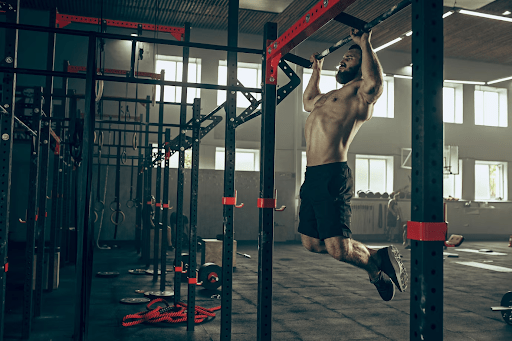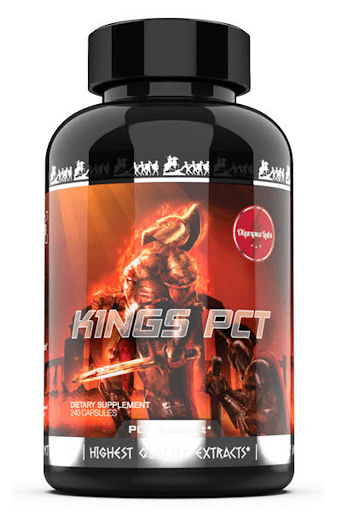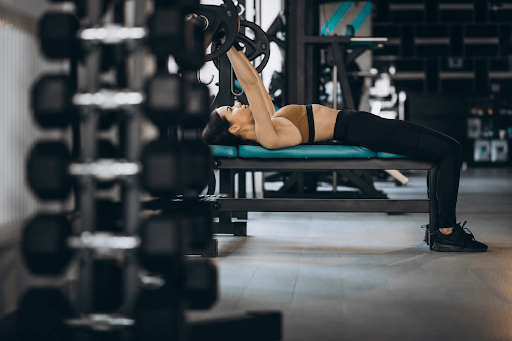In the realm of fitness and bodybuilding, achieving peak performance often comes at a cost, and it’s not just the hours of sweat and dedication. For those who are deeply committed to pushing the boundaries of their physical capabilities, the journey can involve a complex interplay of hormones that can have lasting effects on the body. This is where Post Cycle Therapy (PCT) steps into the spotlight, offering a vital but often misunderstood component of the fitness equation.
Table of Contents
The Basics of Post Cycle Therapy
Post Cycle Therapy, often abbreviated as PCT, is a strategic and structured approach used in the fitness and bodybuilding community to restore hormonal balance in the body after certain fitness activities. While the term might sound complex, at its core, PCT is a methodical regimen designed to help the body recover from the impact of intense training, bodybuilding cycles, or the use of substances that can affect hormone levels.
Components of PCT: PCT typically includes a combination of medications, supplements, lifestyle adjustments, and monitoring protocols, all tailored to the individual’s specific needs. The primary goal of PCT is to:
- Rebalance Hormones: Fitness activities, especially those involving anabolics or performance-enhancing substances, can disrupt the natural hormonal equilibrium in the body. PCT aims to restore this balance, ensuring that key hormones such as testosterone, estrogen, and cortisol return to their normal levels.
- Minimize Side Effects: One of the primary reasons for implementing PCT is to reduce or prevent the potential side effects associated with hormonal imbalances. These side effects can range from mood swings and decreased libido to more serious health concerns.
- Preserve Gains: For those who’ve worked tirelessly to build muscle and strength, PCT is a crucial tool for preserving the gains achieved during their fitness journey. It helps to maintain the hard-earned progress even after the training or cycle has ended.
Why It’s Necessary: The Need for PCT
Now that we understand what PCT entails, the question that naturally arises is, “Why is it necessary?” The need for Post Cycle Therapy becomes apparent when we consider the following factors:
- Hormone Imbalance: Intensive fitness activities, especially those involving the use of anabolic or similar substances, can lead to a state of hormonal imbalance. Elevated levels of certain hormones, such as testosterone, can signal the body to stop natural hormone production, which can be detrimental to long-term health.
- Side Effects: Fitness enthusiasts often experience a range of side effects when hormonal balance is disrupted. These can include mood swings, fatigue, muscle loss, and even more severe complications like cardiovascular issues and fertility problems. PCT helps mitigate these side effects by restoring hormonal equilibrium.
- Preserving Gains: For bodybuilders and athletes who have worked tirelessly to sculpt their bodies and achieve peak performance, the fear of losing hard-earned gains is a significant concern. PCT plays a crucial role in maintaining muscle mass and strength post-cycle, ensuring that the results of their efforts endure.
Common Misconceptions: Myths about PCT
Despite its importance, Post Cycle Therapy is often shrouded in myths and misconceptions. Let’s dispel some common misunderstandings:
- PCT Is Only for Steroid Users: While PCT is frequently associated with cycles, it’s not exclusive to this group. Any fitness regimen that disrupts hormonal balance can benefit from PCT. This includes intense training, prohormone use, or any activity that impacts hormone levels.
- PCT Is a One-Size-Fits-All Approach: PCT should be personalized to an individual’s needs and goals. There’s no universal PCT plan that works for everyone, as factors like age, fitness level, and the type of fitness activities undertaken all play a role in determining the appropriate approach.
- PCT Is Optional: Some individuals mistakenly believe that PCT is optional and can be skipped. In reality, neglecting PCT can lead to serious health consequences and hinder long-term fitness goals.
The Science Behind PCT
To comprehend the significance of Post Cycle Therapy (PCT), it’s crucial to grasp how fitness activities can affect the delicate balance of hormones in the body. Fitness enthusiasts engage in various training regimens, some of which can induce substantial hormonal changes. Here’s a closer look at the impact of fitness activities on hormone levels:
- Testosterone Levels: Intense resistance training, particularly involving heavy weights and compound exercises, can temporarily increase testosterone levels. While this is advantageous for muscle growth, it can lead to a feedback loop in which the body reduces natural testosterone production.
- Estrogen and Cortisol: On the flip side, elevated testosterone levels can trigger the conversion of excess testosterone into estrogen, potentially leading to estrogen dominance. Furthermore, high-intensity workouts can elevate cortisol, a stress hormone, which can have catabolic effects on muscle tissue.
- Hormonal Imbalance: The combined effect of altered testosterone, estrogen, and cortisol levels can disrupt the body’s natural hormonal balance. This imbalance can result in a range of issues, including mood swings, fatigue, diminished libido, and muscle loss.

Role of PCT: How PCT Helps Restore Hormonal Balance
Now that we understand the hormonal changes induced by fitness activities, let’s explore how Post Cycle Therapy plays a pivotal role in restoring hormonal equilibrium:
- Hormone Receptor Sensitivity: PCT often involves medications that influence hormone receptor sensitivity. These medications help the body’s receptors become more responsive to natural hormones, facilitating the resumption of normal hormone production.
- Reducing Estrogen Dominance: In cases where estrogen levels have become elevated, PCT medications can counteract this by inhibiting the conversion of testosterone to estrogen. This action helps to bring estrogen levels back into a healthy range.
- Boosting Natural Testosterone Production: PCT typically includes compounds that stimulate the body’s own production of testosterone. This is critical for preventing the long-term suppression of natural testosterone production that can occur after intense fitness activities.
- Mitigating Cortisol Effects: PCT can also include substances that help mitigate the catabolic effects of cortisol on muscle tissue. By reducing cortisol levels, these compounds aid in preserving hard-earned muscle gains.
Benefits of Proper PCT: Advantages of Following a PCT Regimen
The advantages of adhering to a well-structured Post Cycle Therapy regimen are multifaceted and far-reaching:
- Hormonal Balance: Perhaps the most significant benefit of PCT is the restoration of hormonal balance. This not only alleviates immediate side effects but also safeguards long-term endocrine health.
- Preserving Gains: For fitness enthusiasts who’ve invested time and effort into building muscle and strength, PCT ensures that these gains remain intact. It prevents the dreaded “post-cycle crash” where muscle loss can be substantial.
- Psychological Well-being: Hormonal imbalances can wreak havoc on mood and mental health. Proper PCT can help stabilize mood, reducing mood swings and promoting a sense of well-being.
- Long-Term Health: By addressing hormonal imbalances and potential side effects early on, PCT contributes to long-term health and reduces the risk of more severe health issues down the road.
When Do You Need Post Cycle Therapy?
Post Cycle Therapy (PCT) is not a one-size-fits-all solution; its necessity varies depending on specific fitness scenarios. Here are three common situations where PCT is typically recommended:
1. Bodybuilding Cycles:
- Scenario: Bodybuilders often engage in bulking and cutting cycles to maximize muscle growth and definition. These cycles can involve intense training and dietary changes.
- Why PCT Is Needed: After a bulking cycle, where testosterone levels may be elevated due to heavy lifting and increased caloric intake, the body may struggle to return to normal hormone production. PCT helps restore hormonal balance and minimize side effects.
2. Steroid Usage:
- Scenario: Some individuals use anabolics or performance-enhancing substances to accelerate muscle growth and athletic performance.
- Why PCT Is Needed: Anabolics usage can significantly disrupt the body’s hormonal balance, leading to suppressed natural testosterone production. PCT is essential to kickstart the body’s testosterone production and prevent long-term suppression.
3. Hormone Imbalance:
- Scenario: Hormonal imbalances can occur due to various factors, including aging, stress, or medical conditions. These imbalances can affect overall health and well-being.
- Why PCT Is Needed: In cases of hormone imbalance, PCT can help regulate hormone levels, improving mood, energy levels, and overall health.

Signs and Symptoms: How to Recognize the Need for PCT
Recognizing the need for Post Cycle Therapy is crucial for ensuring timely intervention and mitigating potential side effects. Here are some signs and symptoms that may indicate the necessity of PCT:
- Fatigue and Low Energy: Persistent fatigue and low energy levels, even after adequate rest, could be indicative of hormonal imbalances that PCT can address.
- Mood Swings: Unexplained mood swings, irritability, or depression can be linked to disruptions in hormone levels.
- Muscle Loss: If you notice a rapid decline in muscle mass or strength after discontinuing a fitness cycle, it may be a sign of suppressed testosterone levels.
- Decreased Libido: A noticeable reduction in libido or sexual function could signal hormonal changes that require attention.
- Gynecomastia (Breast Tissue Enlargement): In some cases, the use of certain substances or hormonal imbalances can lead to the development of breast tissue in males, a condition known as gynecomastia.
Types of Post Cycle Therapy
Medications are a cornerstone of Post Cycle Therapy, and they play a pivotal role in restoring hormonal balance. Here are some common medications used in PCT:
1. Selective Estrogen Receptor Modulators (SERMs):
- Examples: Clomiphene (Clomid), Tamoxifen (Nolvadex)
- How They Work: SERMs block the action of estrogen in certain tissues while acting as an estrogen agonist in others. They are often used to counteract the effects of elevated estrogen levels during PCT.
2. Aromatase Inhibitors (AIs):
- Examples: Anastrozole (Arimidex), Letrozole (Femara)
- How They Work: AIs inhibit the conversion of testosterone into estrogen, helping to reduce estrogen levels. They are particularly useful when high estrogen levels are a concern.
3. Human Chorionic Gonadotropin (hCG):
- How It Works: hCG mimics the action of luteinizing hormone (LH), stimulating the testes to produce testosterone. It’s often used during PCT to kickstart natural testosterone production.
4. Clomiphene (Clomid):
- How It Works: Clomid stimulates the release of LH and follicle-stimulating hormone (FSH), which in turn, prompts the testes to produce testosterone.
Tips for a Successful PCT
During Post Cycle Therapy, following a set of dos and don’ts is crucial for a successful recovery and hormonal balance. Here’s a list of recommendations:
Dos:
- Follow Your Healthcare Professional’s Guidance: Always adhere to the PCT plan prescribed by your healthcare provider. They will consider your individual needs and monitor your progress.
- Stay Hydrated: Proper hydration is essential for overall health and can aid in the elimination of waste products from the body.
- Get Adequate Rest: Ensure you get enough sleep to support recovery and hormone production. Aim for 7-9 hours of quality sleep each night.
- Monitor Your Progress: Regularly check in with your healthcare provider and get blood tests to assess hormone levels. Adjust your PCT plan as needed based on the results.
- Maintain a Healthy Diet: Consume a well-balanced diet rich in nutrients that support hormonal health. Focus on whole foods, lean proteins, fruits, vegetables, and healthy fats.
Don’ts:
- Don’t Skip Medications: If your PCT plan includes medications, take them as prescribed. Skipping doses can hinder your progress.
- Avoid Excessive Alcohol: Alcohol can have negative effects on hormone balance and recovery. Limit or avoid alcohol consumption during PCT.
- Don’t Overtrain: While exercise is essential, excessive training can increase stress and cortisol levels. Stick to a balanced workout routine that allows for proper recovery.
- Avoid Stress: Chronic stress can interfere with hormonal balance. Incorporate stress-reduction techniques like meditation or deep breathing into your daily routine.
- Stay Away from Unverified Supplements: Be cautious about using unverified supplements or performance-enhancing substances during PCT. Consult your healthcare provider before adding any new supplements to your regimen. And then select accordingly from the top 5 post cycle therapy supplements.

Conclusion
In the ever-evolving world of fitness and bodybuilding, the pursuit of excellence often demands more than just physical strength and endurance. It requires a deep understanding of the intricate dance of hormones within the body. Post Cycle Therapy (PCT) emerges as the beacon of hope for those who dare to tread the path of peak performance, offering a roadmap to navigate the complex terrain of hormonal balance.




























